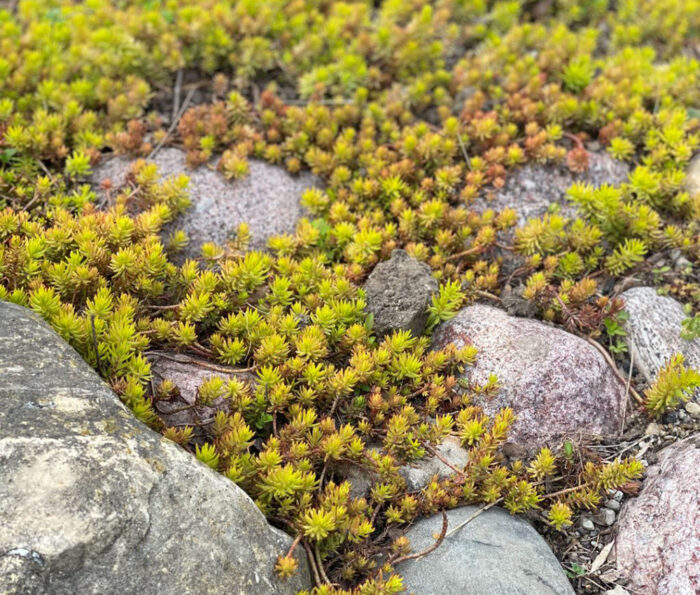
Spreading ground covers are invaluable in certain garden situations. Over the years they creep along the ground to fill in large spaces easily, saving you a lot of time and money that could be spent on other plants. Sometimes creepers can be aggressive, but other times a fast-growing plant that fills up an area quickly is just what you need for a particular spot. Here are some of my favorite creeping ground covers that appreciate sunny areas.
Veronica
Veronica spp. and cvs., Zones 4–9
Complementary to most every other color, blue is a lovely addition to any garden. Usually seen as an upright plant, veronica (also known as speedwell) can also be found in low-growing and spreading forms with stunning blue flowers. These varieties are drought tolerant and take full sun. Cold hardy and at times evergreen, they are attractive to pollinators yet resistant to grazers such as deer and rabbits. Clip or sheer them periodically to clean up spent foliage and maintain a dense habit. Here are two great creeping veronicas.
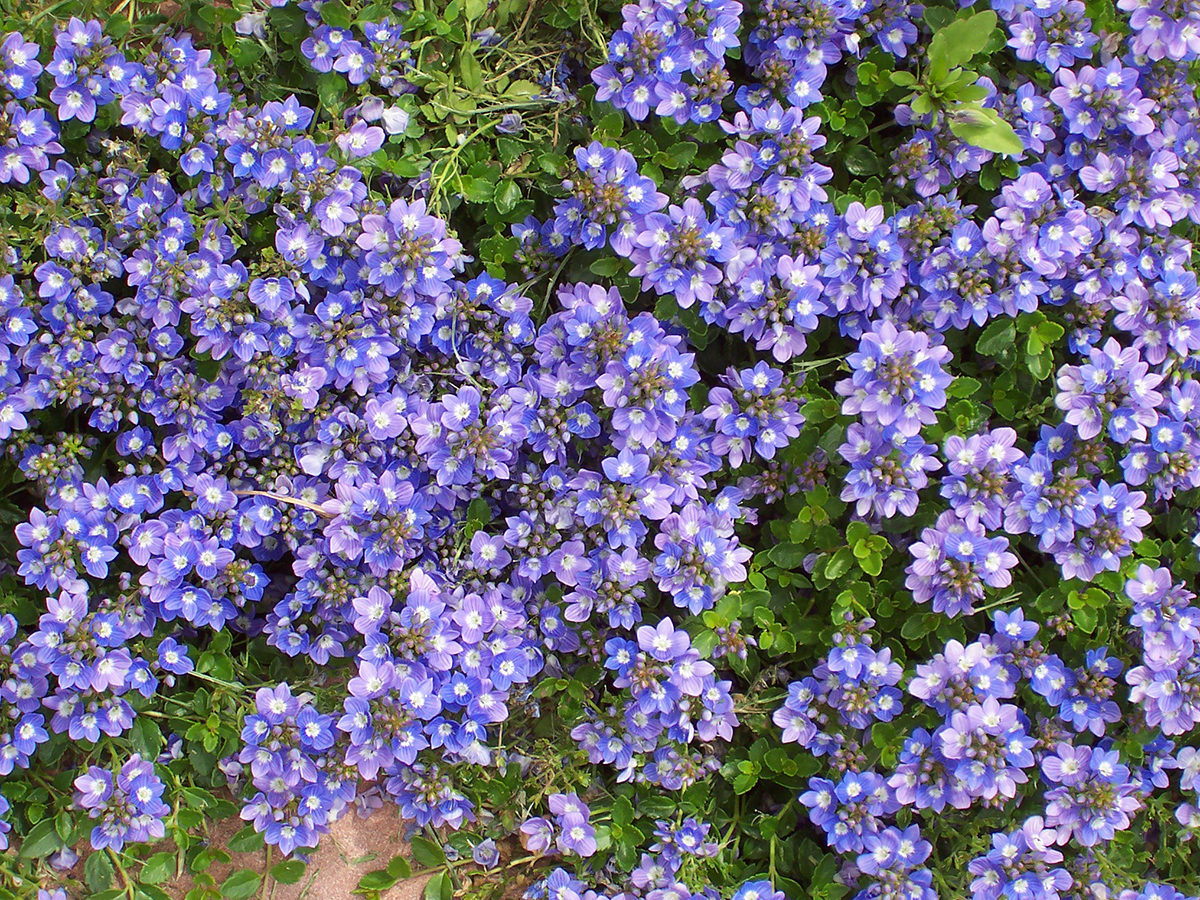
Turkish speedwell
Veronica liwanensis, Zones 4–9
This veronica is known to be a sturdy little plant with deeply green evergreen foliage. Growing only to a height of 2 feet yet reaching from 12 to 18 inches wide, this plant’s fine texture makes for an attractive contrast to stone paths. It is also tolerant of occasionally being stepped upon. Early spring rewards you with displays of delicate bright blue flowers. Intense summer heat will turn the foliage a bronze shade of green.
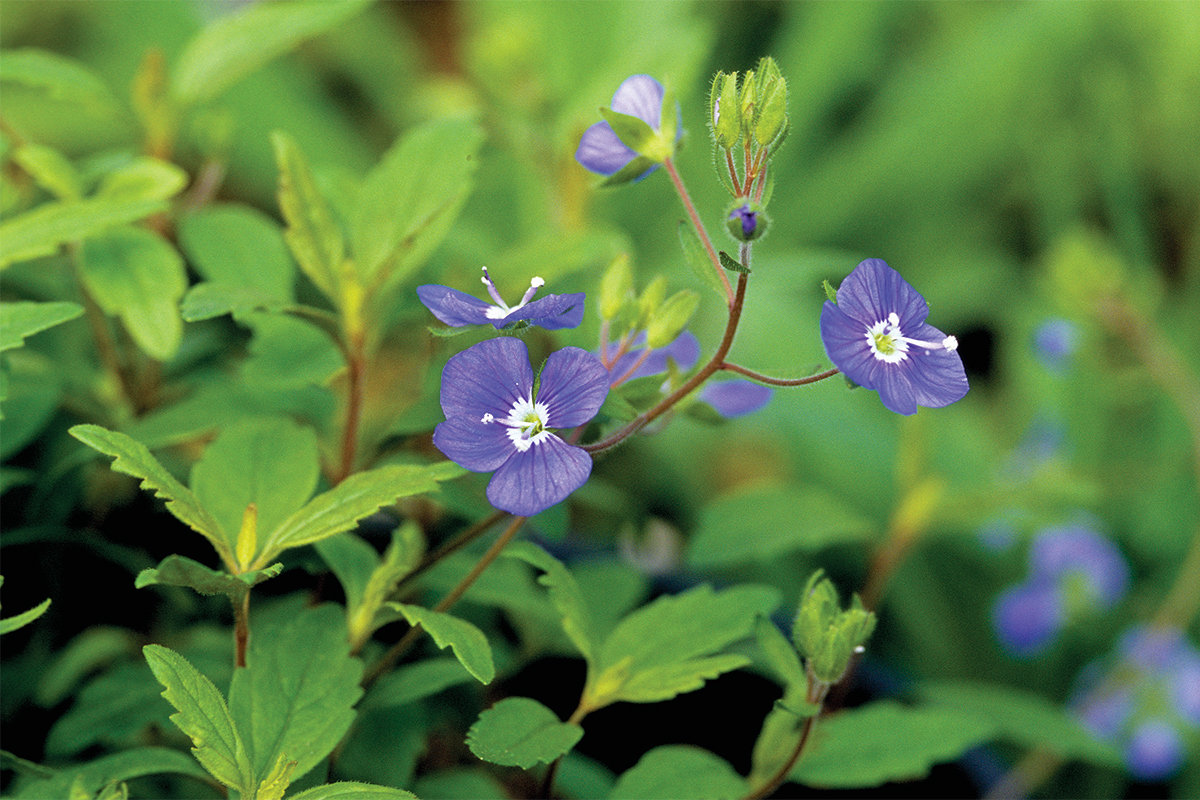
‘Georgia Blue’ veronica
Veronica peduncularis ‘Georgia Blue’, Zones 5–9
Four weeks of spring floral displays are only one reason to include ‘Georgia Blue’ veronica on your shopping list. This perennial grows 4 to 6 inches tall with a spread of 18 to 24 inches. This plant is a good choice for containers, slopes, rock gardens, and edging. Its blue flowers with white eyes at their centers are quite unique, contrasting nicely with the purple cast on the evergreen foliage.
Sedum
Sedum spp. and cvs., Zones 3–11
Plants that have been available forever are sometimes overlooked, but let’s not forget them. Sedums are workhorses in the garden that are easy to grow and simple to maintain. Pollinators love them, rabbits, deer, and other pests rarely give them notice, and many turn color in fall and are evergreen. With some hardy to Zone 3, sedums prefer soil on the dry side and locations that are sunny, although they will tolerate sites with partial shade, growing less densely but happily just the same. The many varieties available provide a wide diversity of leaf form, color, and texture. Here are just some of the standouts.
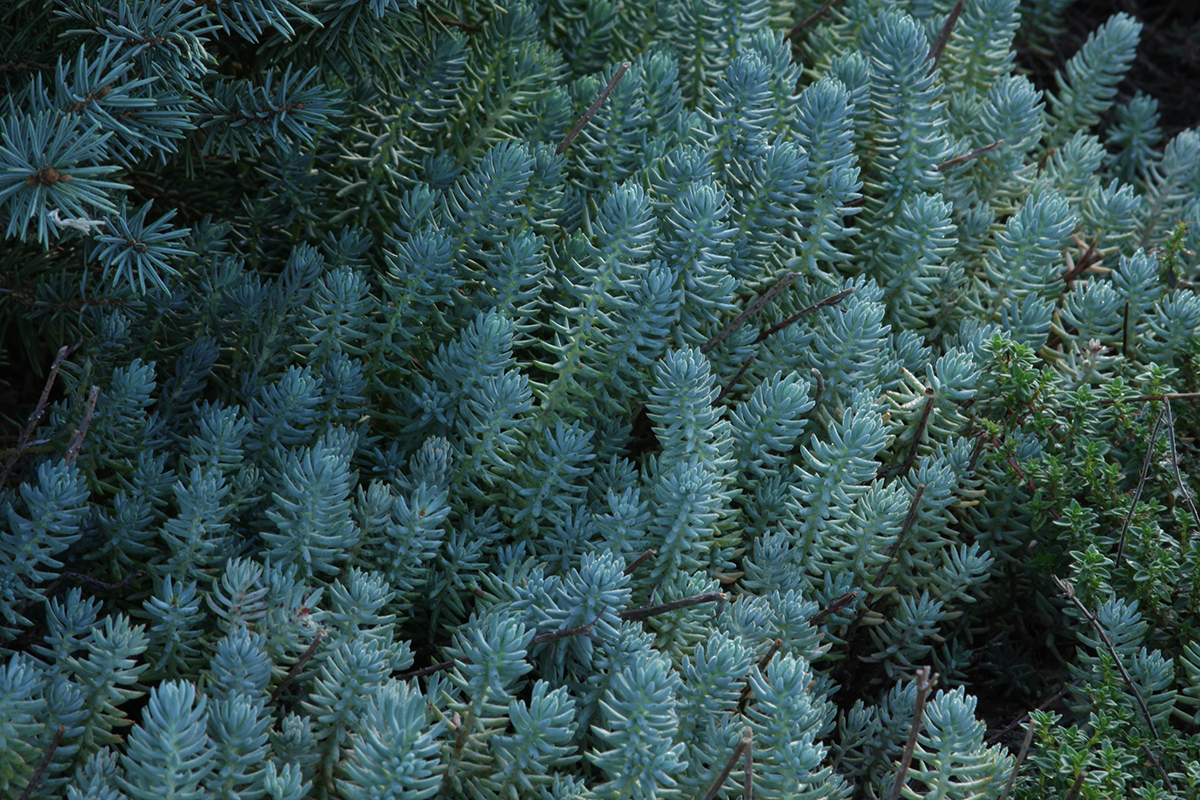
‘Blue Spruce’ sedum
Sedum reflexum ‘Blue Spruce’, Zones 4–9
With blue-green foliage, ‘Blue Spruce’ sedum has low-maintenance, needlelike succulent leaves. Small yellow flowers resembling stars appear for over a month during the summer. Hardy to Zone 4, this sedum grows 6 to 8 inches tall and 12 to 24 inches wide. A wonderful addition to sunny containers or the top of a wall, this sedum works great around the base of containers that I place inside beds, just off the edge of a patio or walkway.
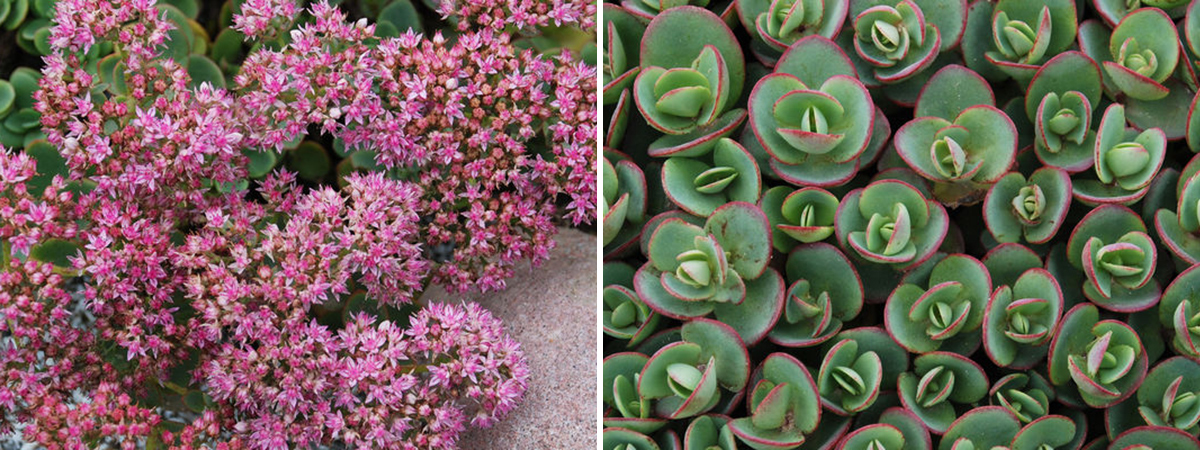
‘Lime Zinger’ sedum
Sedum ‘Lime Zinger’, Zones 4–9
For a more traditional look, ‘Lime Zinger’ sedum, which belongs to the SunSparkler® series, is exceptionally tough. A bright red edge surrounds the compact lime-green foliage. The cheery pink flowers of this tough little wonder reach no more than 6 inches high, and the plant has a spread of 18 inches.
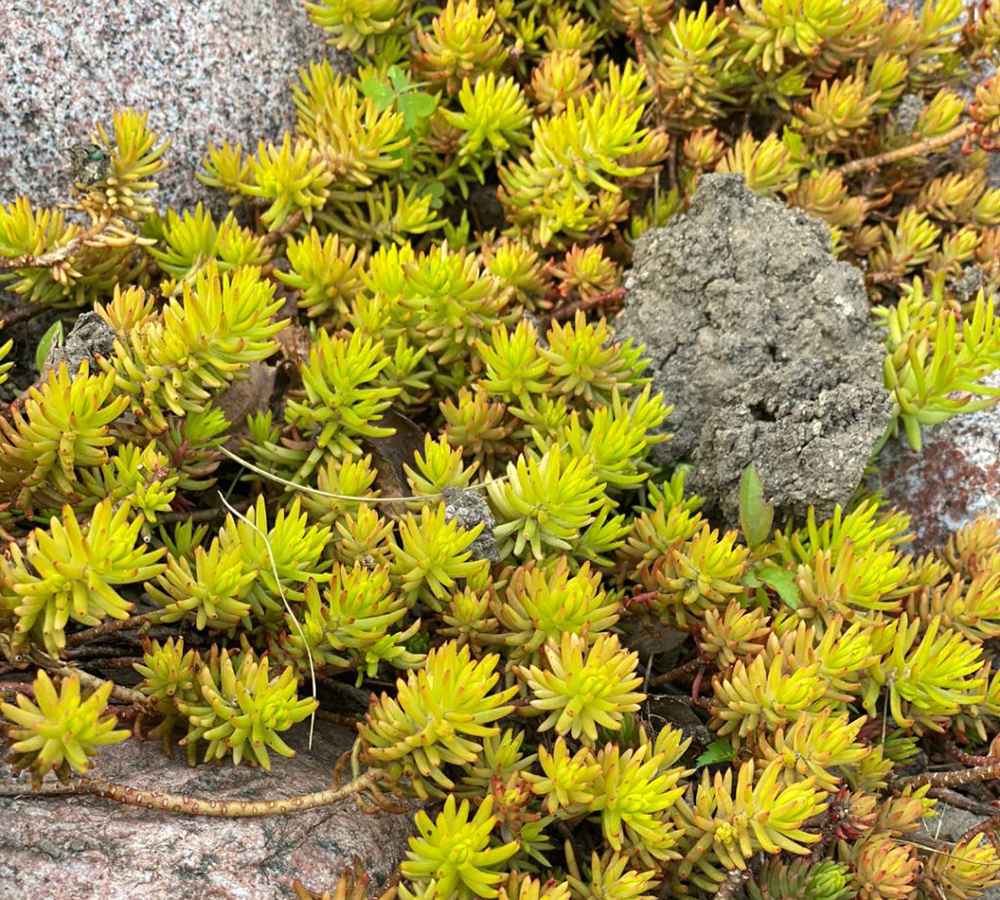
‘Angelina’ sedum
Sedum rupestre ‘Angelina’, Zones 5–9
‘Angelina’ sedum brings a bit of sunshine with its needle-shaped foliage in shades of chartreuse, pink, and gold that shift to amber as fall arrives. Golden flowers held upon red stems sit in clusters 6 inches above the ground as the plant reaches 18 to 24 inches wide. This plant is beloved by butterflies.
Thyme
Thymus spp. and cvs., Zones 2–10
Fragrance is a wonderful ingredient to include in one’s garden. Some herbs are as useful for their fragrance as they are for cooking. One of my favorites is thyme. With some species hardy to Zone 2 and enjoying dry and sunny conditions, thyme is tolerant of salts and is useful in containers and for filling nooks and crannies. Pollinator friendly and critter resistant, it handles foot traffic well. When needed, prune it after the blooms have finished. Here are two dynamic creeping thymes that make great ground covers.

Red creeping thyme
Thymus praecox ‘Coccineus’, Zones 5–9
At only 2 to 4 inches tall and 12 inches wide, red creeping thyme forms dense evergreen leaves that are covered in miniature red or purple flowers from early to mid-summer. The fall foliage is a lovely bronze.

‘Purple Carpet’ creeping thyme
Thymus praecox ‘Purple Carpet’, Zones 4–9
At 3 to 6 inches tall and 12 to 18 inches wide, ‘Purple Carpet’ creeping thyme is slightly larger than red creeping thyme. With bright purple blooms and dark green leaves that turn a dark purple in the fall, it looks stunning in the garden. These two cultivars make a nice combination.
When you are planting your little spreaders, either to fill some gaps or create a mass of color or texture, leave some space between them, not only so they have room to grow but also to allow for some small spring bulbs to be popped in next fall. Some early spring color peeking out of your ground cover will look lovely.
For more information on ground covers, check out:
- Tough Ground Covers for the Northern Plains
- 27 Better Ground Covers for Shade to Replace Problematic Plants
- Use These Ground Covers as Lawn Substitutes
And for more Northern Plains regional reports, click here.
—Marti Neely, FAPLD, owns and operates Marti Neely Design and Associates in Omaha, Nebraska.



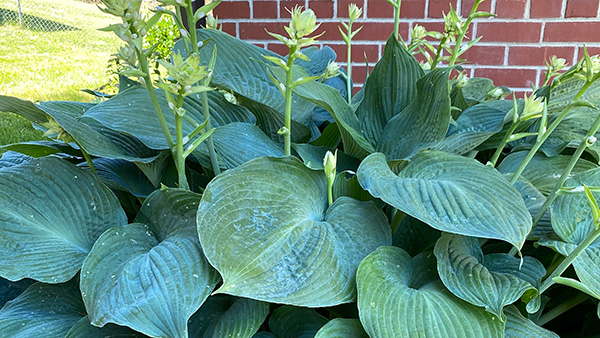














Comments
Log in or create an account to post a comment.
Sign up Log in